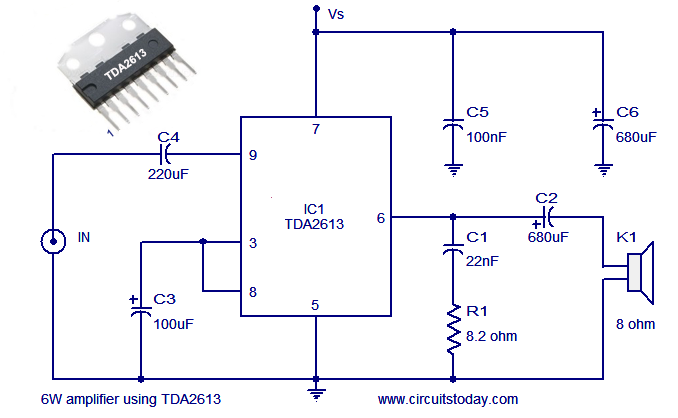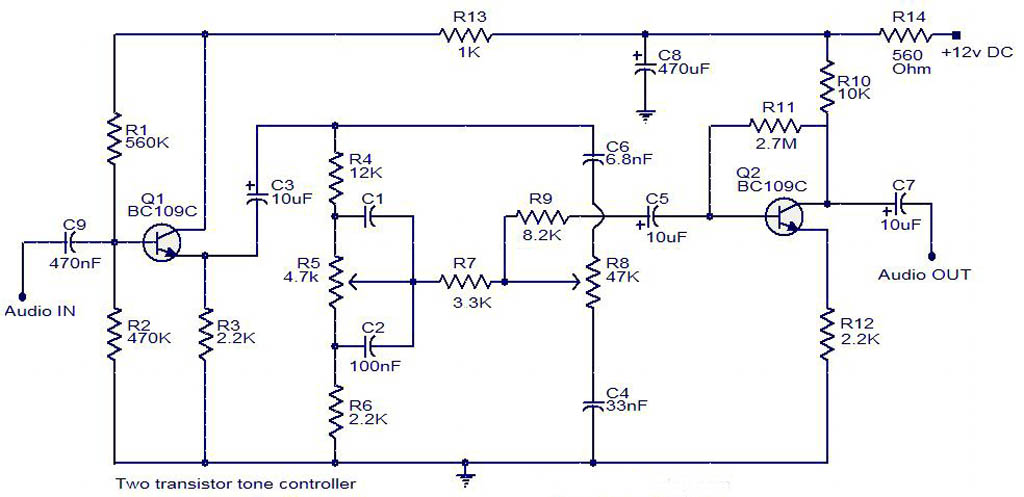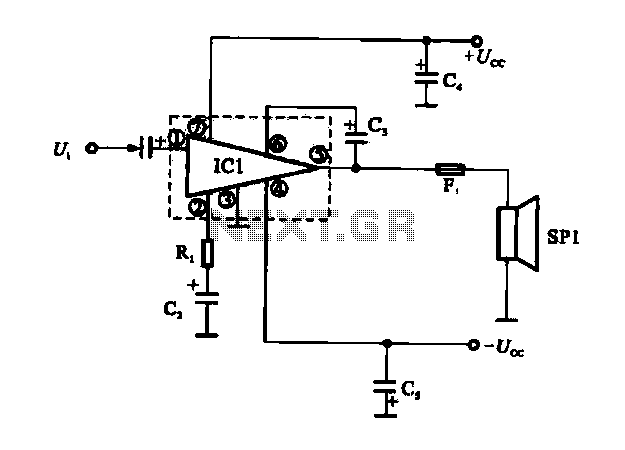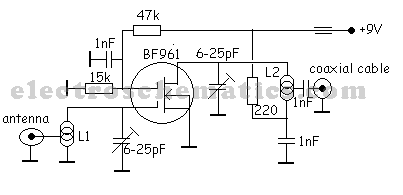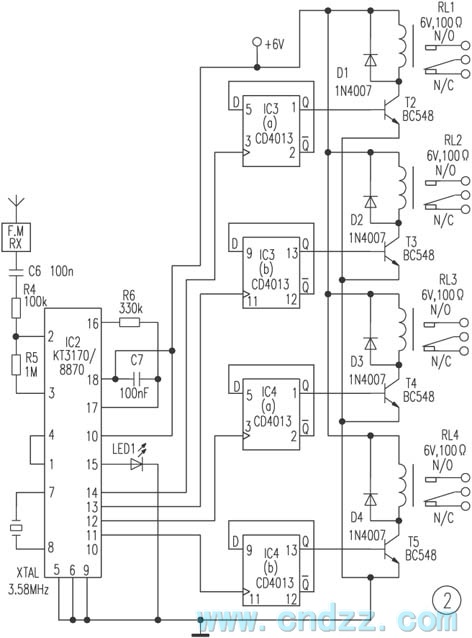
Household voice recording circuit
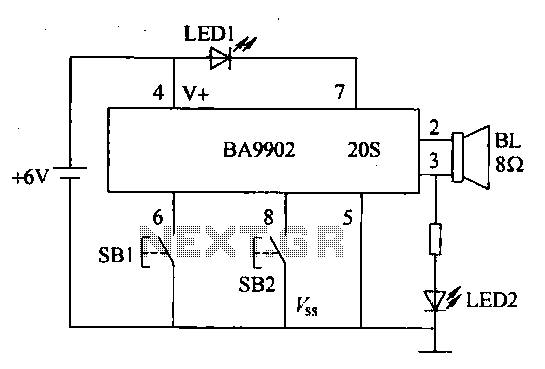
The voice recorder's entry information can be stored for 100 years, repeated 100,000 times, with low power consumption. It requires a 5-6V DC power supply and has a recording current of 2 mA.
The voice recorder circuit is designed to efficiently manage the storage and playback of audio data while ensuring long-term reliability and low power consumption. A key feature of this device is its ability to retain recorded information for up to 100 years, making it suitable for applications requiring archival audio storage.
The power supply section of the circuit operates within a voltage range of 5 to 6 volts DC, which is typical for low-power electronic devices. This voltage range allows for compatibility with standard power sources, including batteries and regulated power supplies. The device's recording current is specified at 2 mA, indicating a low energy requirement during operation, which contributes to its longevity and efficiency.
The core of the voice recorder likely utilizes a digital storage medium, such as flash memory, which can endure numerous write and erase cycles, supporting the specified 100,000 repetitions of data storage. This feature ensures that the device can be used extensively without degradation in performance or data integrity.
In addition to the power supply and storage components, the circuit may include an analog-to-digital converter (ADC) to facilitate the conversion of audio signals into a digital format suitable for storage. This ADC must be chosen for its low power consumption and high fidelity to ensure that the recorded audio maintains clarity and detail.
Furthermore, the circuit may incorporate a microcontroller or digital signal processor (DSP) to manage the recording and playback processes, including user interface elements such as buttons for starting or stopping recordings and indicators for power status and recording activity.
Overall, the design of this voice recorder circuit emphasizes durability, efficiency, and ease of use, making it an effective solution for long-term audio recording applications.The voice recorders entry information can be stored for 100 years, repeat 100,000 times, power consumption lriw, 5-6V DC power supply, recording current 2smA. Time ZOs.
The voice recorder circuit is designed to efficiently manage the storage and playback of audio data while ensuring long-term reliability and low power consumption. A key feature of this device is its ability to retain recorded information for up to 100 years, making it suitable for applications requiring archival audio storage.
The power supply section of the circuit operates within a voltage range of 5 to 6 volts DC, which is typical for low-power electronic devices. This voltage range allows for compatibility with standard power sources, including batteries and regulated power supplies. The device's recording current is specified at 2 mA, indicating a low energy requirement during operation, which contributes to its longevity and efficiency.
The core of the voice recorder likely utilizes a digital storage medium, such as flash memory, which can endure numerous write and erase cycles, supporting the specified 100,000 repetitions of data storage. This feature ensures that the device can be used extensively without degradation in performance or data integrity.
In addition to the power supply and storage components, the circuit may include an analog-to-digital converter (ADC) to facilitate the conversion of audio signals into a digital format suitable for storage. This ADC must be chosen for its low power consumption and high fidelity to ensure that the recorded audio maintains clarity and detail.
Furthermore, the circuit may incorporate a microcontroller or digital signal processor (DSP) to manage the recording and playback processes, including user interface elements such as buttons for starting or stopping recordings and indicators for power status and recording activity.
Overall, the design of this voice recorder circuit emphasizes durability, efficiency, and ease of use, making it an effective solution for long-term audio recording applications.The voice recorders entry information can be stored for 100 years, repeat 100,000 times, power consumption lriw, 5-6V DC power supply, recording current 2smA. Time ZOs.
